I had been looking at this holiday for about 3 years and managed to book it this year. I think it was actually “Industrial Heritage of Shropshire” and was based at Church Stretton, Shropshire.
On the evening of our arrival there was an introductory talk from the person leading the tour, but it was quite general as it was for everyone – walkers and photographers too, if they were interested.
The first day we started by looking at mining. We were going up to Titterstone Clee and stopped on the way to see the probable site of “bell mines”. We were told that gorse bushes grew on the places where the “bell pits” had been.
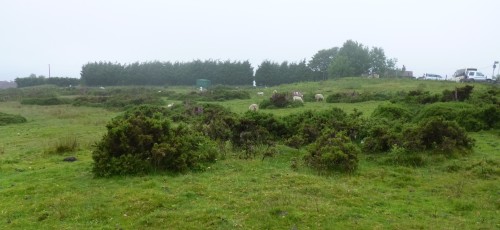
There was also a place where they might have dug into the hillside.
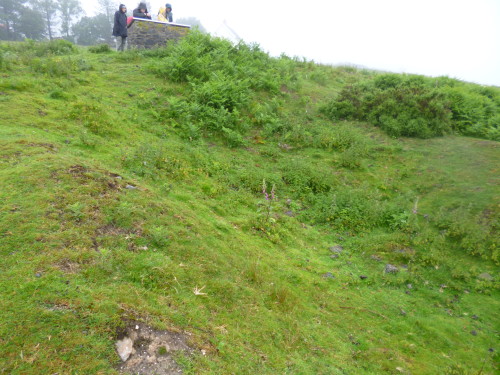
There was a viewing point above this but we had no view as it was very misty! We then went on to Titterstone Clee – where it was definitely foggy – we had in fact gone upwards and into the cloud. This was another mining area but they had discovered that the Dhu Stone there was more valuable than anything they were mining as it was/is used for the stone for roads. There is apparently a large chunk out of the hillside where the stone has been dug out – but we couldn’t even see the hill, it was so foggy. Most of us got out of the minibus to look at the remains of the crushing works, where the stone had been broken down.

We were told that the rocks were crushed by gravity – i.e. dropped.
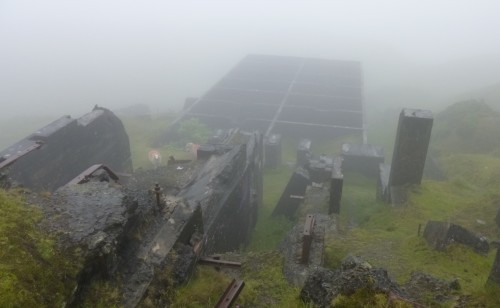
The crushed rocks were then taken down the hill on an inclined plane. There were apparently the remains of this, but again it was too foggy to see it. I think it was just the remains of a railway line, but they used the full trucks going down to pull up the empty trucks.
As there was no point in staying there long, we went on to Stourport where the Staffordshire and Worcestershire canal meets the River Severn. The river and canals were the main form of transport for goods before the railways, of course. The boats coming up the Severn were too big to go along the canals so there were locks which allowed these boats into the canal basin.

The boats were then unloaded, so the goods could be transferred to canal barges.
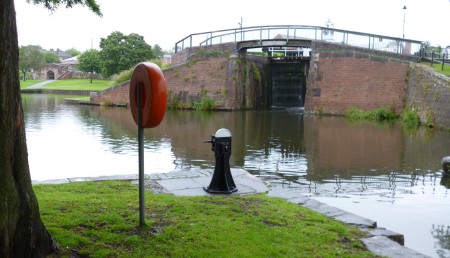
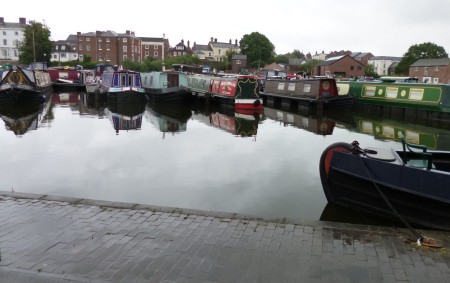
As the wide lock uses a lot of water there is also a narrow boat lock which uses rather less. We were very fortunate that a narrow boat was just leaving the Severn and using the lock as we got there – especially as one of our party had never seen a boat going through a lock!
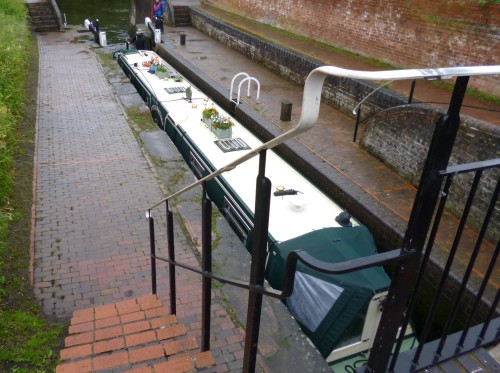
We ate our lunch at Stourport and then went on to Daniel’s mill near Bridgnorth. This is a working watermill and was open especially for us. Milling has apparently been carried on here for about 900 years although the present mill is Victorian. It is a 38 ft “backshot” wheel, which is one of the designs of waterwheel.
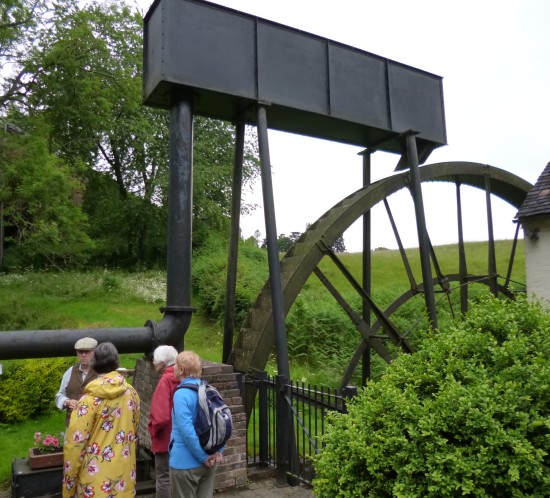
In fact they have only used the top input for the wheel once, for a short time, as they are not sure the wheel is strong enough any more. Mostly they use an input about half way down.
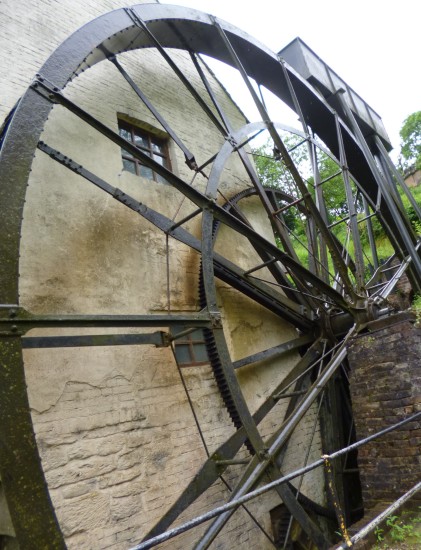
The waterwheel uses cogs and so gearing to turn another axle.
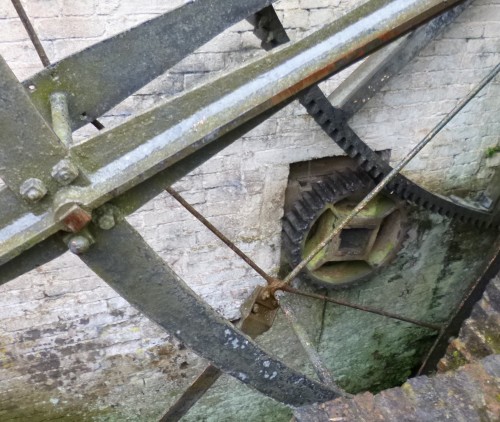
Inside the axle is linked by cogs to the axle that turns the millstone.
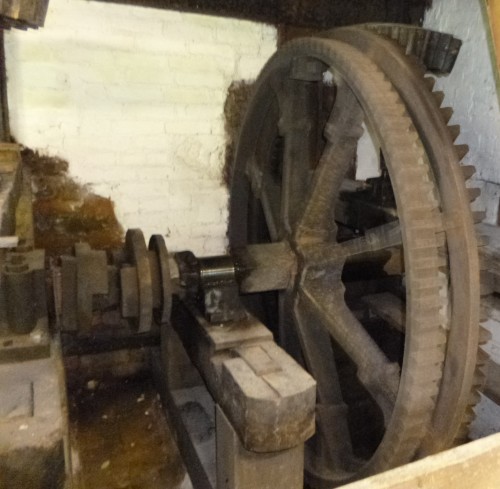
I do like these cog wheels and the gearing that means the millstone turns much faster than the waterwheel. Like the windmill we went to before, the cogs are wooden to prevent sparks (and fires), because they break easily in case of a problem and are easily replaced. There is in fact the possibility of working two millstones.
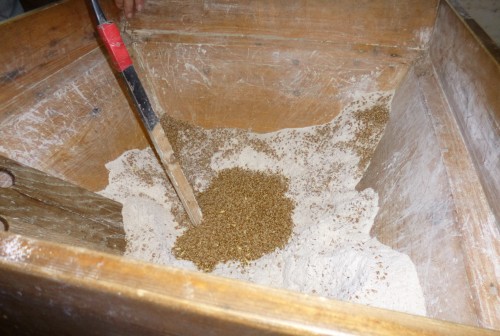
And we had a chance to actually see the mill working. It does sell the ground flour to a biscuit maker, I think.
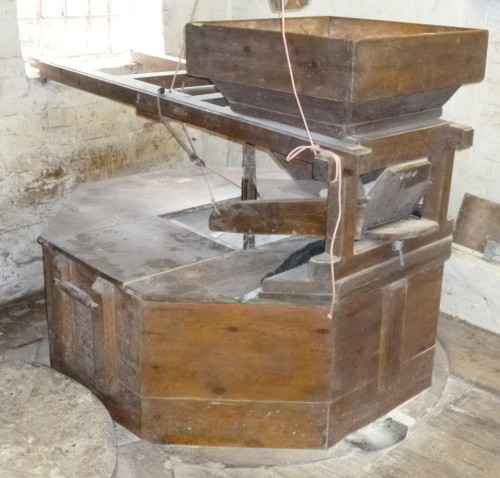
We had tea and cake in the café at the mill and then it was back to the hotel to change before a briefing for the next day and dinner.
So was it a good day? Yes, very interesting, with the waterwheel being the highlight for me.